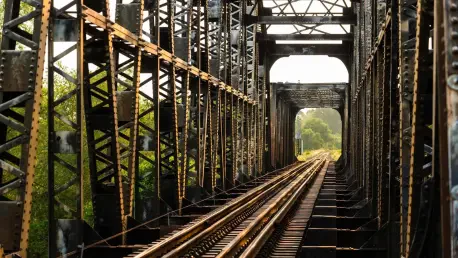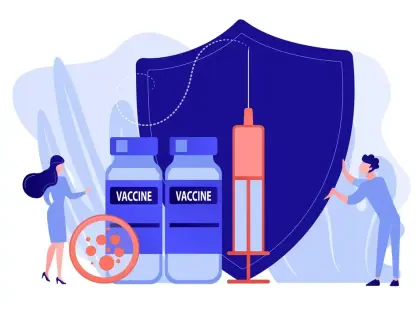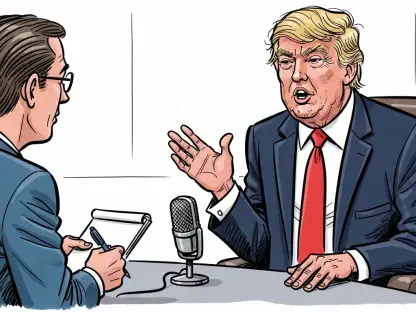Amid discussions on fiscal responsibility and government spending reductions, important infrastructure projects across the United States face varying degrees of financial scrutiny. This situation puts particular emphasis on rail-related efforts, as decreased funding raises concerns of potential safety compromises. The New Jersey Dock Bridge Rehabilitation Project recently suffered a significant budget cut from $375 million to $235 million. While this might save taxpayers $140 million and supposedly accelerate the completion of the project by two years, it has sparked debate on whether such cost-saving measures might inadvertently risk the integrity of critical rail infrastructure. Such actions demand a thorough examination of the implications on safety and reliability, a topic that evokes strong opinions among engineers and stakeholders alike.
Recent decisions by agencies like the United States Department of Transportation (USDOT) to discard components such as enhanced lighting and defer essential maintenance further underscore the complexity of managing infrastructure. Deferring work on potentially aging bridge elements raises questions about whether short-term fiscal prudence is being prioritized over long-term safety considerations. Past incidents, such as notable infrastructure failures and the Challenger disaster, remind us of the perilous outcomes when engineering and safety concerns are overlooked. The need for a balanced approach cannot be overstated, ensuring that the pursuit of budget cuts does not come at the expense of foundational stability and public safety.
Evaluating Risks in Cost-Saving Measures
When budget reductions intersect with infrastructure projects, managers and policymakers must grapple with the potential risks associated with cutbacks. The challenge lies in ensuring that these measures do not compromise the safety and reliability of critical structures like railways and their supporting systems. In the case of the New Jersey Dock Bridge Rehabilitation Project, alterations in scope, such as the removal of enhanced lighting, prompt serious questions about risks that could emerge from potentially deferred upkeep of aging elements. While short-term financial savings are appealing, they must be weighed against unknown long-term consequences, which might include increased susceptibility to catastrophic failures.
History serves as a potent reminder that neglecting maintenance can lead to unforeseen disasters. Infrastructure failures can derail economies and threaten lives, as evidenced by incidents where inadequate safety measures had catastrophic implications. Within engineering circles, there is a consensus that while fiscal responsibility is essential, it must be complemented by a commitment to maintaining infrastructure integrity. This involves a comprehensive scrutiny of scope changes, assessment of risks, and collaborative dialogue among engineers, policymakers, and stakeholders. Notably, the importance of transparent communication regarding the potential impacts of budget cuts on safety cannot be overlooked.
Balancing Safety with Fiscal Prudence
The task of balancing fiscal prudence with maintaining infrastructure integrity poses a significant challenge, requiring careful consideration of multiple factors. While the positive economic implications of budget cuts are undeniable, they must be balanced against a commitment to nurturing robust infrastructure. It is essential that while ensuring public funds are wisely spent, foundational components of essential transportation systems do not suffer neglect leading to safety hazards. Engineers and stakeholders have expressed concerns, underscoring that rigorous review procedures should be instituted to scrutinize any scope changes related to budget reductions thoroughly.
Lessons from history consistently highlight the consequences of underestimating the importance of infrastructure maintenance. The pursuit of financial efficiency needs harmonization with a sustained dedication to infrastructure safety. In practice, this necessitates robust planning, execution, and constant evaluation of project modifications aimed at safeguarding public safety. Where budget cuts potentially compromise essential aspects of infrastructure, engineers are compelled to voice their objections and prioritize safety. Through reinforcing these safety-first measures, the narrative advances towards a unified understanding that prudent planning must guard against undermining the resilience of critical infrastructures.
Rekindling Focus on Investment and Planning
As discussions around fiscal responsibility and government spending reductions continue, key infrastructure projects in the U.S. are under financial review. Rail-related projects are particularly impacted, with cuts posing concerns about safety. For instance, the New Jersey Dock Bridge Rehabilitation Project’s budget was slashed from $375 million to $235 million. This reduction might save taxpayers $140 million and speed up project completion by two years, yet it has sparked debate over whether such savings could jeopardize rail infrastructure integrity. These budget decisions prompt a thorough examination of safety and reliability implications, a subject provoking strong opinions among engineers and stakeholders.
Decisions by agencies like the U.S. Department of Transportation (USDOT) to cut components such as enhanced lighting and postpone essential maintenance highlight the complexity of managing infrastructure. Deferring maintenance on aging bridge components brings into question whether short-term savings are favored over long-term safety. Past incidents remind us of the dangers of ignoring engineering and safety concerns. A balanced approach is crucial to ensure budget cuts don’t threaten public safety and structural integrity.









